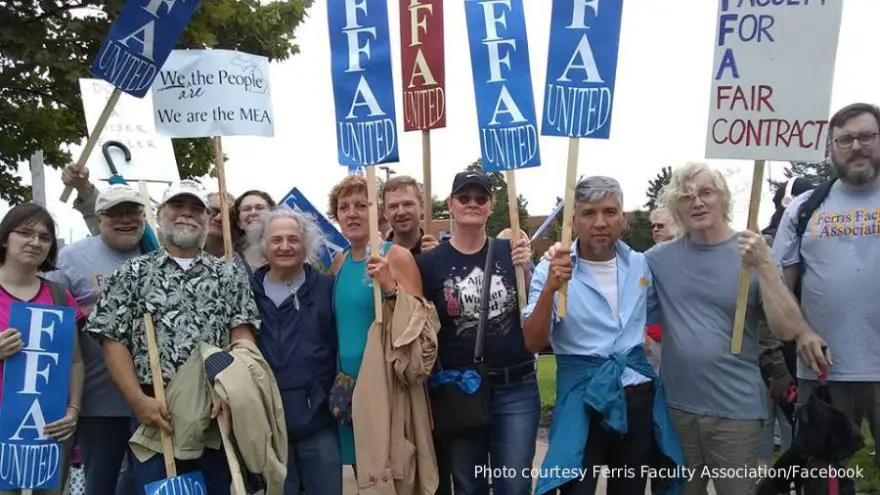For students, faculty play an essential and integral role over the course of one’s college career, from teaching classes to advising clubs and helping students during office hours. Similarly, faculty associations are a crucial part of life for college faculty members across the U.S. and carry influence in determining faculty wages, benefits, and teaching conditions.
Faculty associations are essentially unions for college and university professors. They have the power to negotiate contracts with their employers and can choose to go on strike should members of the associations feel it necessary. Faculty unions empower professors to have a collective voice as they negotiate the terms of their employment and have considerably more leverage in these negotiations than if they acted as individuals.
The Ferris Faculty Association of Ferris State University in Michigan exemplified the bargaining power Faculty Associations bring to the table during their most recent strike in 2018. According to FFA Vice President John Caserta, FFA members went on strike after FSU administrators offered wages that were “not acceptable” and tried to make cuts to faculty benefits such as health care. The strike came on the heels of a vote of no confidence by the FFA in FSU President David Eisler who Caserta described as “anti-faculty.”
“He’s supported by a board of trustees that is anti-faculty and so the FFA is really an important organization that assures faculty academic freedom,” Caserta told The College Post. “Our benefits will be preserved and our rights as faculty won’t be undermined.”
Adjunct faculty add another layer to labor organizing among college and university professors. Adjunct professors are either part-time workers or professors who have not yet achieved tenure status. Tenure status means permanent employment for faculty and tenured professors have much greater job security than adjunct faculty.
Adjuncts have no guarantee of employment from one school year to another and in many cases adjuncts are prohibited from organizing with tenured faculty, meaning they must form their own faculty associations for adjuncts. Adjuncts may also work at multiple universities to make ends meet.
“Academic programs suffer because [the administration] is not putting money into hiring tenure track faculty,” Caserta said. “That undermines the quality of education at the university and they would rather build buildings and hire administrators that they don’t need.”
Adjunct faculty make up a sort of second class among college and university professors and administrations often treat faculty as disposable compared to tenured professors. According to Johnathan Bohn, the director of public affairs for the Inter Faculty Organization which represents seven state universities in Minnesota, the IFO has been working to ensure that administrators treat adjunct faculty fairly.
“Adjunct faculty oftentimes are treated very poorly from the administration and they’re used as disposable labor,” Bohn told The College Post. “We have many adjuncts that are piecing together employment at one or two or three different universities and we want to make sure…they have the ability to do their job without the stress of trying to piece together a meager living in various institutions.”
Faculty unions aren’t just a way for teachers to advocate on their own behalf though. Students can also benefit from the actions of faculty associations on their campuses.
“When our faculty talk about their working conditions,” Bohn said. “without good working conditions, students will not have good learning conditions.”
It’s a common refrain among educators all over the U.S. underscoring just how intertwined the lives of students and teachers are and why contract negotiations between administrators and faculty associations can have ripple effects that impact the daily lives of students in the classroom.
According to Caserta, faculty engaged with students during the strike at FSU in 2018, to educate them about the details of FFA’s contract negotiations with the FSU administrators. In turn, many students stood with their professors on the picket line.
“We set up table…where we would give students information about why we are on strike and why we were negotiated because the administration claimed that they couldn’t put money into student programs because the faculty were too greedy,” Caserta said. “it wasn’t difficult to convince students that we were there in their best interest.”
According to Caserta, the strike was “successful” in large part thanks to students. Negotiations concluded with faculty retaining their medical benefits and securing a larger annual pay increase than the administration had initially offered.



